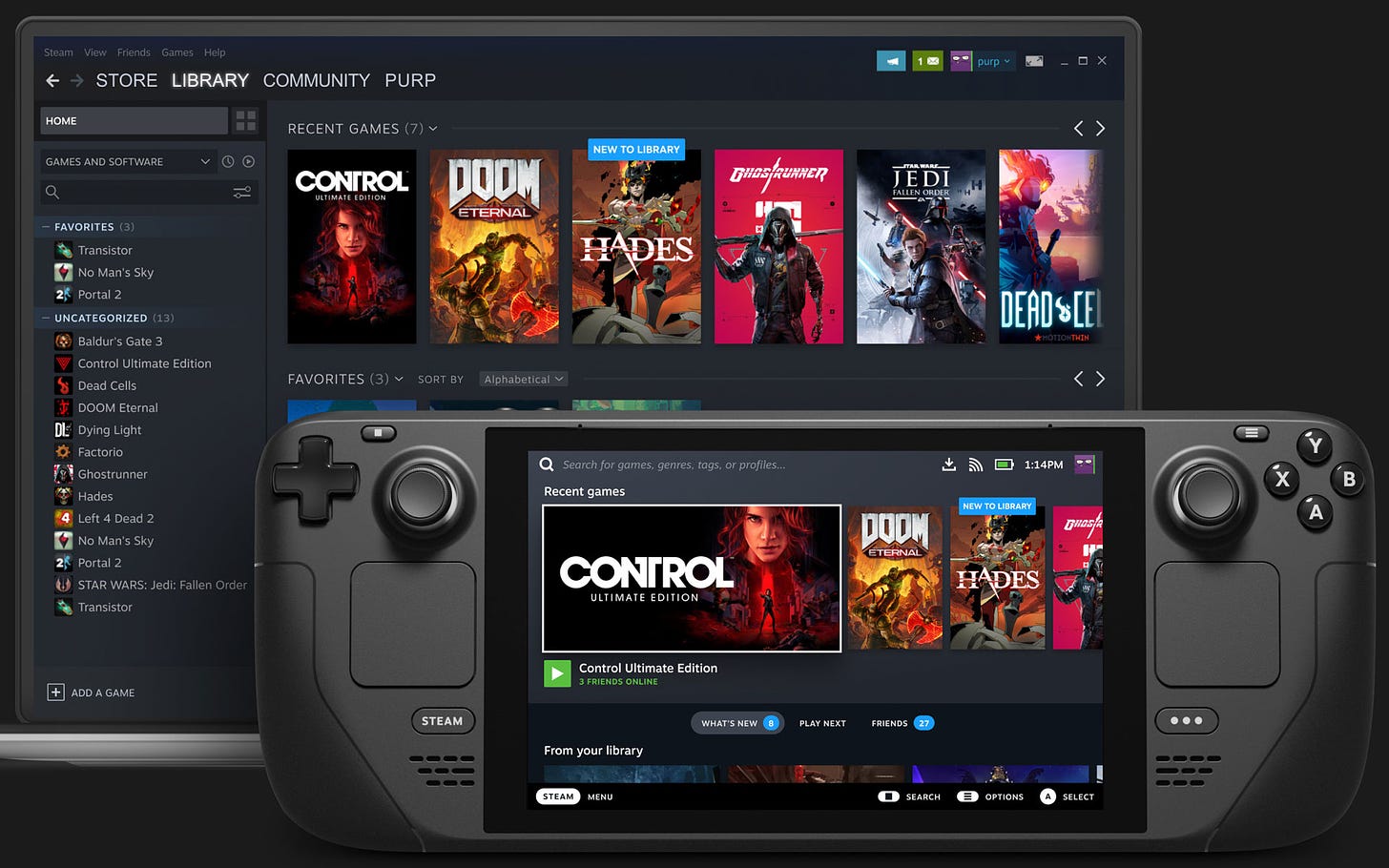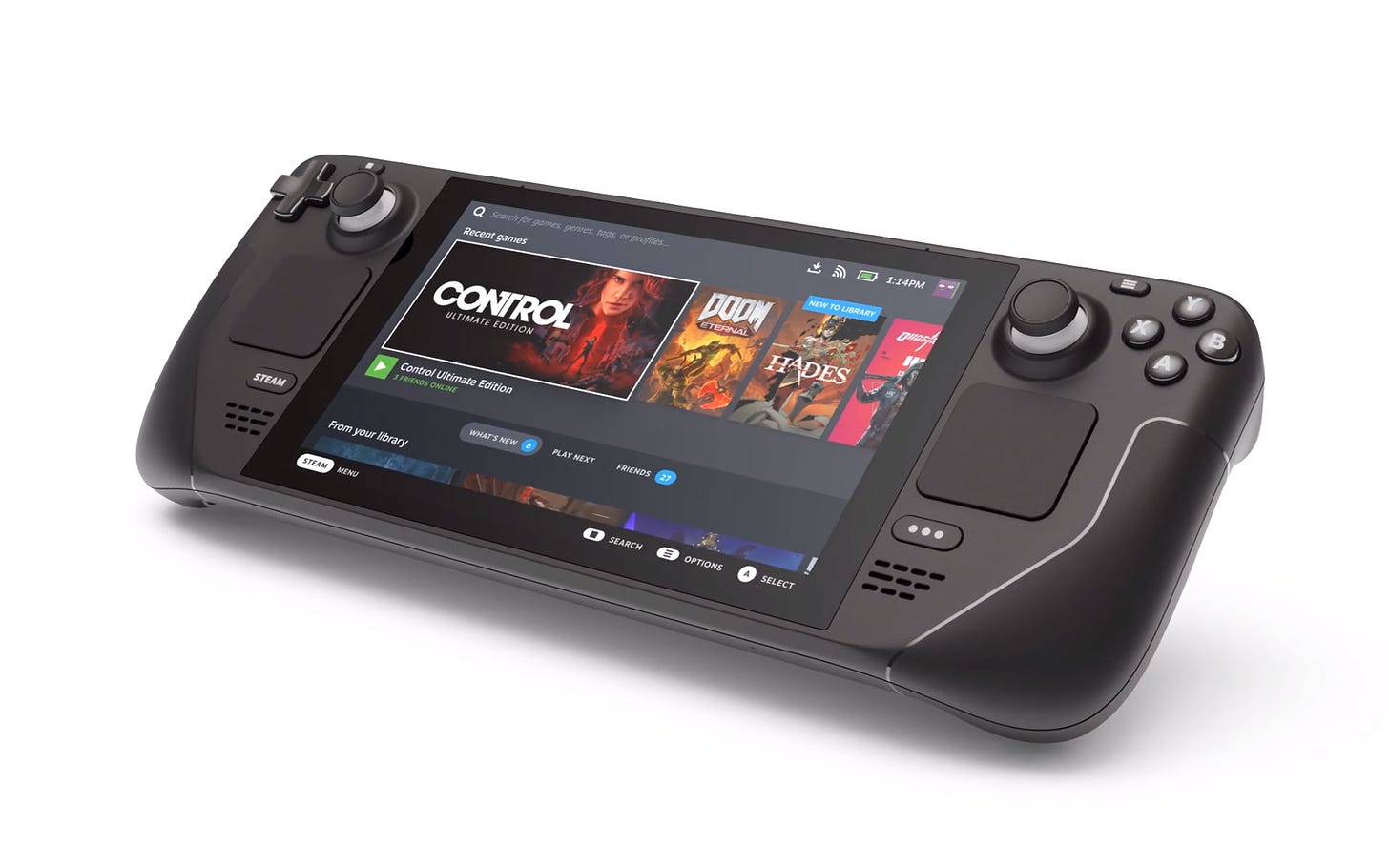The Steam Deck: a Gaming PC in Switch Form
Valve revives the SteamPC dream in a portable device, out in major markets by the end of the year

There are people who believe in coincidences and people who don't but... come on: mere days after Nintendo unveiled the rather underwhelming OLED Switch, which is nice but definitely not a game-changer in any sense of the word, Valve unveils a handheld gaming system that, well, is. The rumored "Steam Pal" is real, it's called the Steam Deck and it's a full, custom-designed PC that Valve put together with the help of AMD. It features a 4-core Zen2 architecture CPU running at up to 3.5 GHz, an 8-core RDNA2 architecture GPU, 16 GB of RAM and either eMMC or NVME SSD storage, all in a chassis that's barely larger than that of a Switch. Needless to say, it's probably the most powerful system to ever appear in such a form factor.
The Steam Deck is not just a regular PC in console's clothing, though. It's designed from the ground up for handheld gaming, featuring a 7-inch LCD screen with a 16:10 aspect ratio (1280x800 pixels) and a 60Hz refresh rate. It offers literally every possible way of game control, from dual thumbsticks and double triggers to a D-pad, a classic four-button "diamond" layout, two trackpad surfaces and four (!) more triggers at the bottom. The device also features 6-axis gyroscopic control and, oh, the LCD is also a touchscreen.

Valve's system offers a microSD card slot for storage expansion, a dual-band 802.11ac Wi-Fi radio (compatible with 2.4/5 GHz networks) and Bluetooth 5.0 compatibility for controllers, accessories and audio. It also offers a headphone jack (remember those?), dual microphones and a USB-C port that offers the full range of possible functions associated with it: charging, output of audio and picture (up to 4K/120 or 8K/60!) and data transfer. Valve will be selling a special dock for the Deck - huh - at some point with all kinds of additional ports for even more connectivity options.
Being Valve's system, the Steam Deck will obviously run PC games consumers have in their Steam libraries. If there's a catch regarding this system, is this: it is not based on Windows but on a special Linux version the company developed for this device (SteamOS 3.0 actually). What this means is that it will be running either the Linux versions of games on the Steam Store or the Windows versions through the Proton emulation layer. Valve claims that the latter is "vastly improved", though, and that PC game developers will not have to do anything for their games to run impressively on the Steam Deck. For the native resolution of its screen, Valve's system is more than powerful enough anyway. Way more powerful, in fact.

Of interest to many may be two facts. First, the Steam Deck is not "locked": consumers can install different operating systems (hello Windows?) and different game stores if they like. Valve used Linux in order to maximize performance and save battery life: the 40Whr battery is decent but not the biggest around, offering anything between 8 and 2 (!) hours of gameplay, depending on the game. Second, the Steam Deck can also be used - especially paired with the aforementioned dock - as a regular computer: SteamOS is offering a proper KDE desktop and allows the installation of proper Linux apps such as browsers or media players.
The Steam Deck will be out in December in the United States, Canada, United Kingdom and the European Union, with "reservations" (not actual pre-orders) starting tomorrow, July 16th. The three available models' prices are as follows: there's a €419 "entry-level" model with 64GB of eMMC storage, a €549 model offering a 256GB NVME SSD and a carrying case and a top-end €679 model offering an even faster NVME SSD of 512GB, "premium anti-glare etched glass" for the screen and a carrying case. These are fair prices for what the Steam Deck is and the only thing that PC gamers would probably need to know before ordering is what the battery life of this device looks like in real-world use. Bring it on, Valve!


